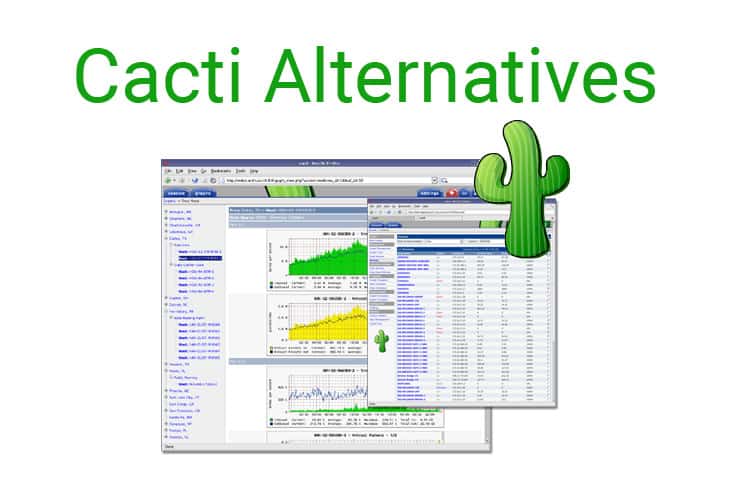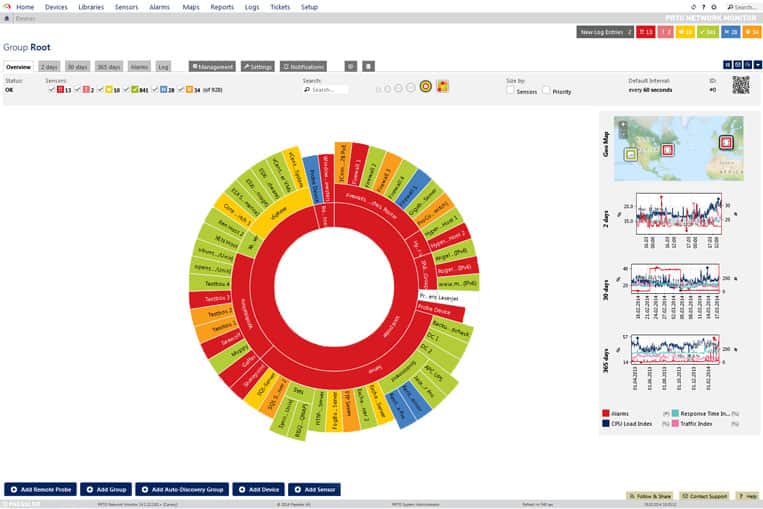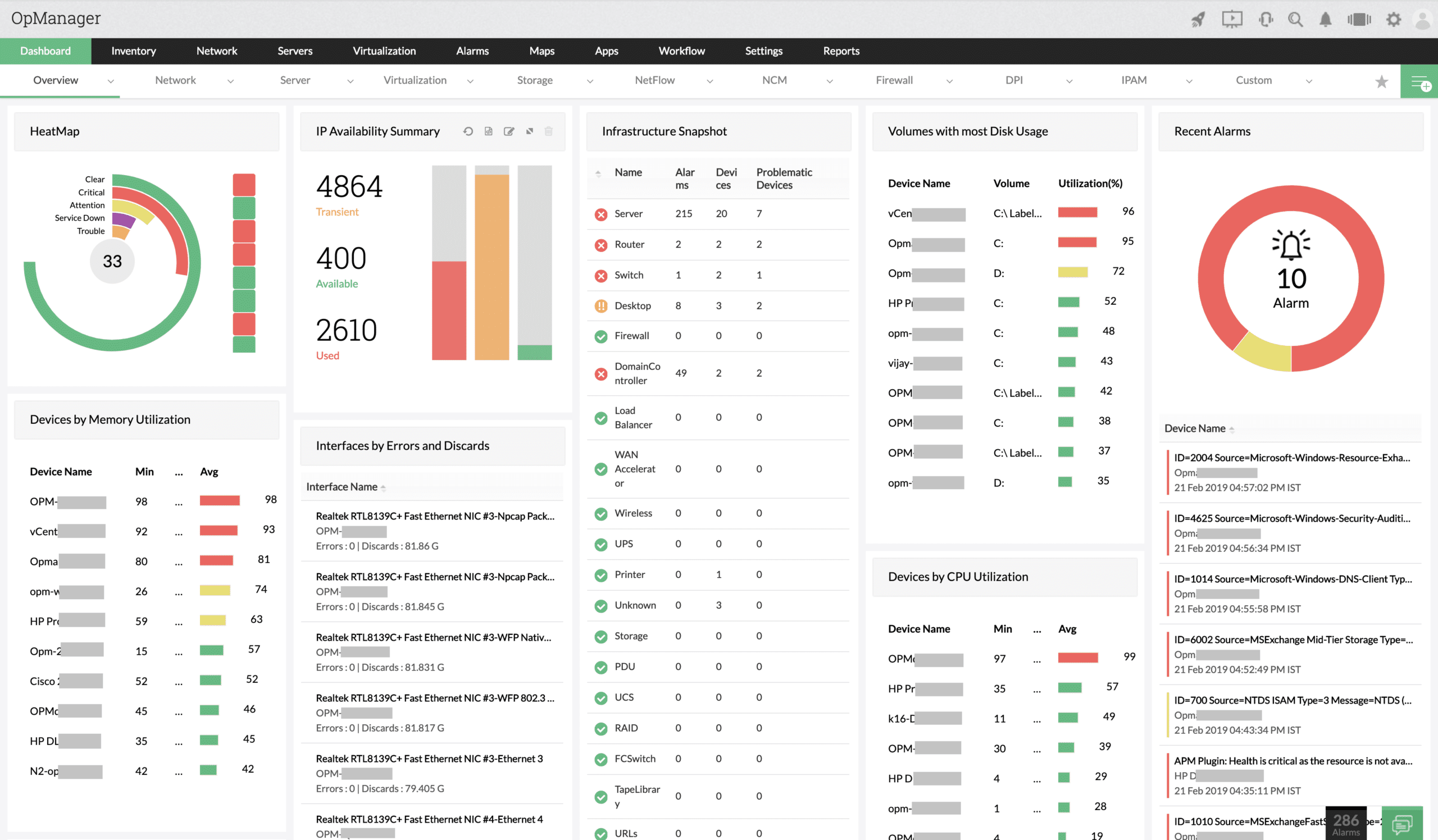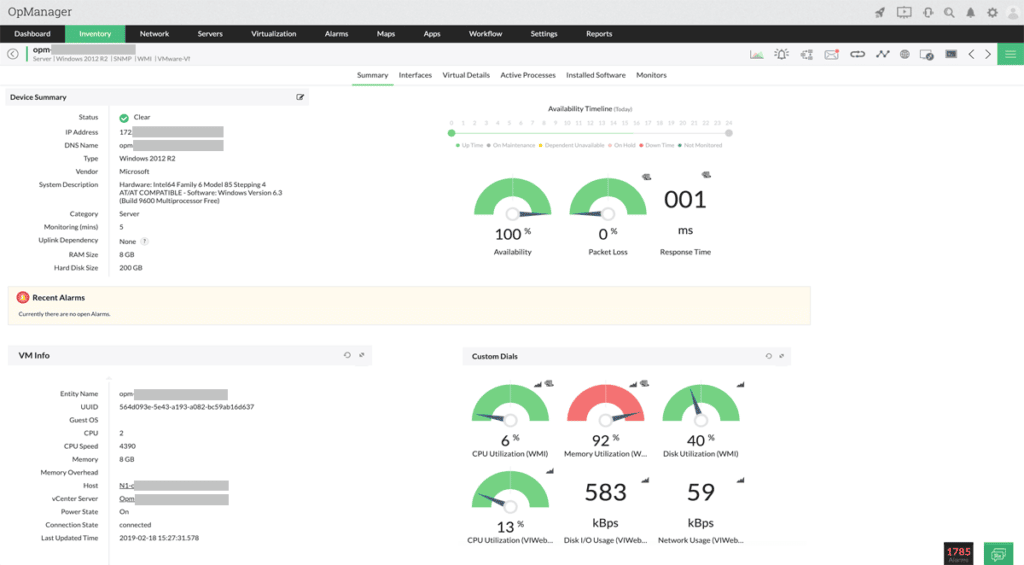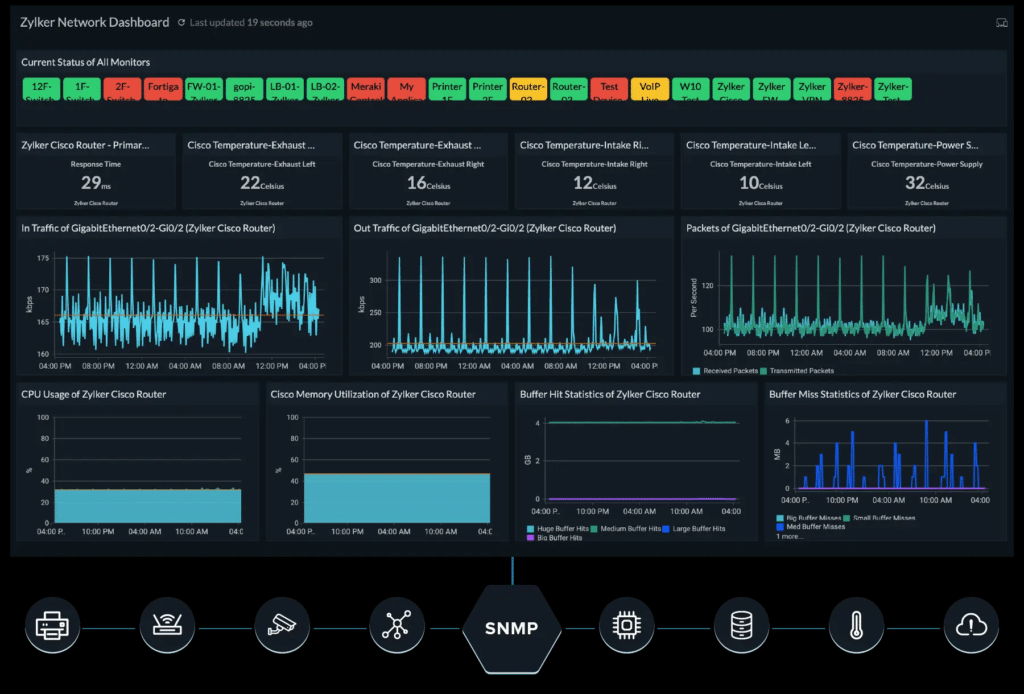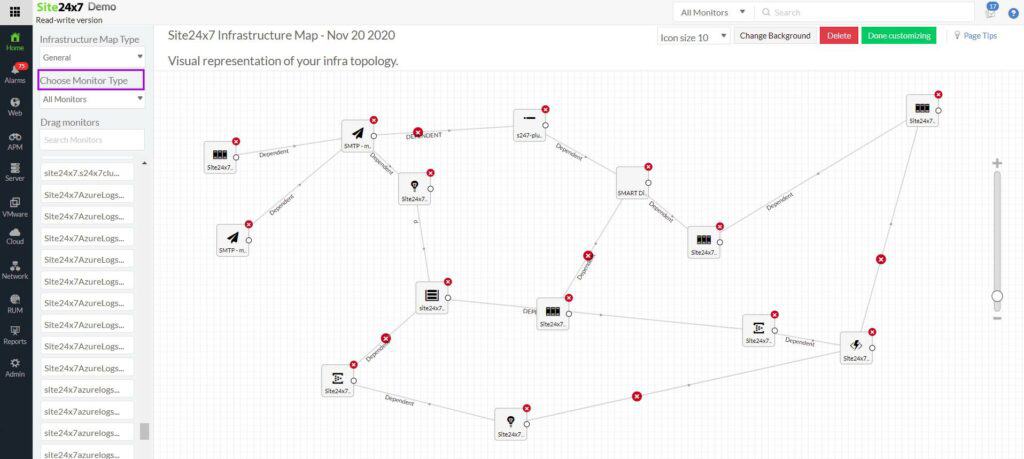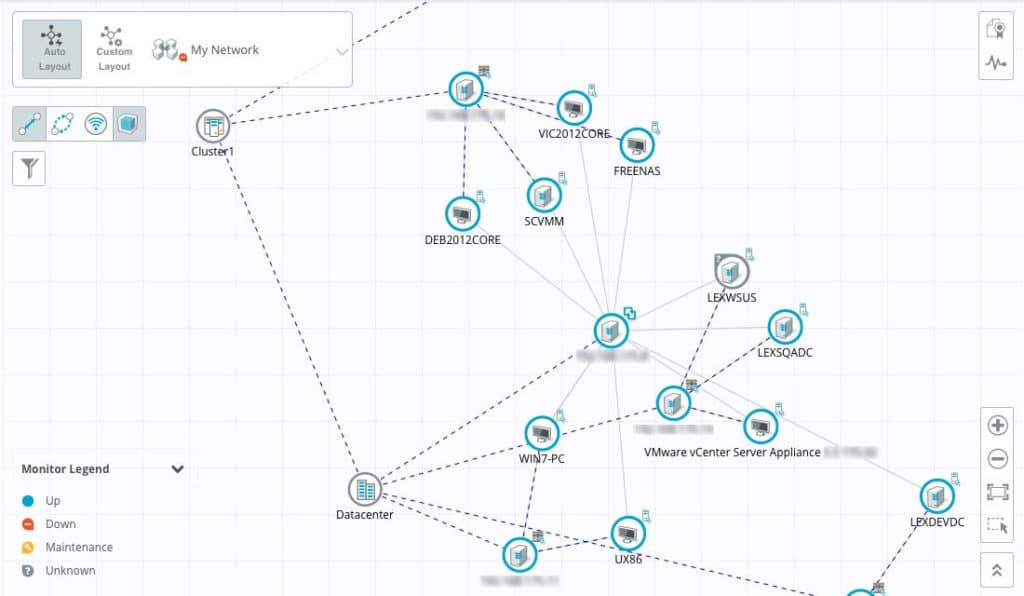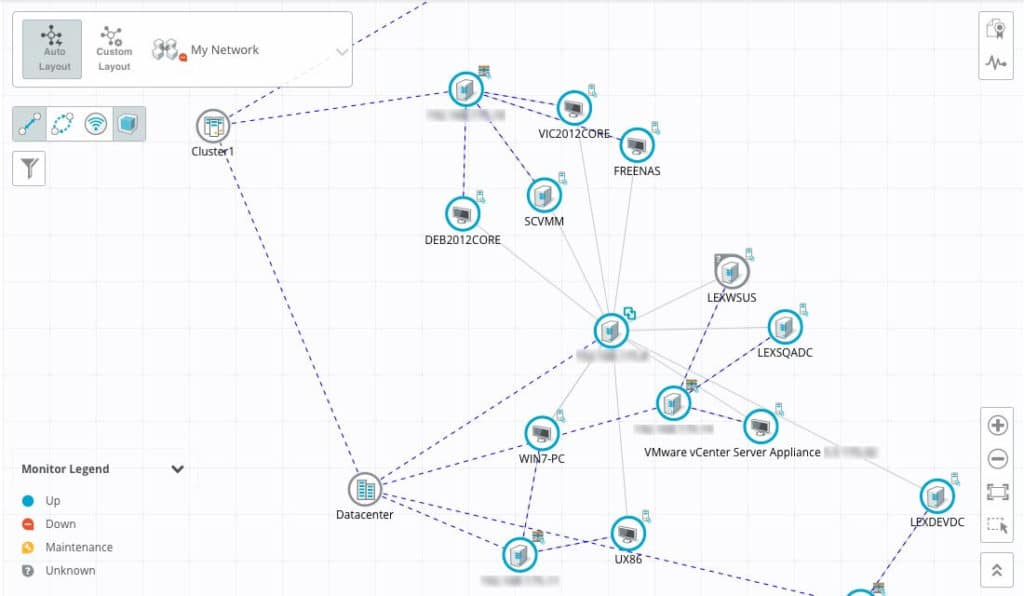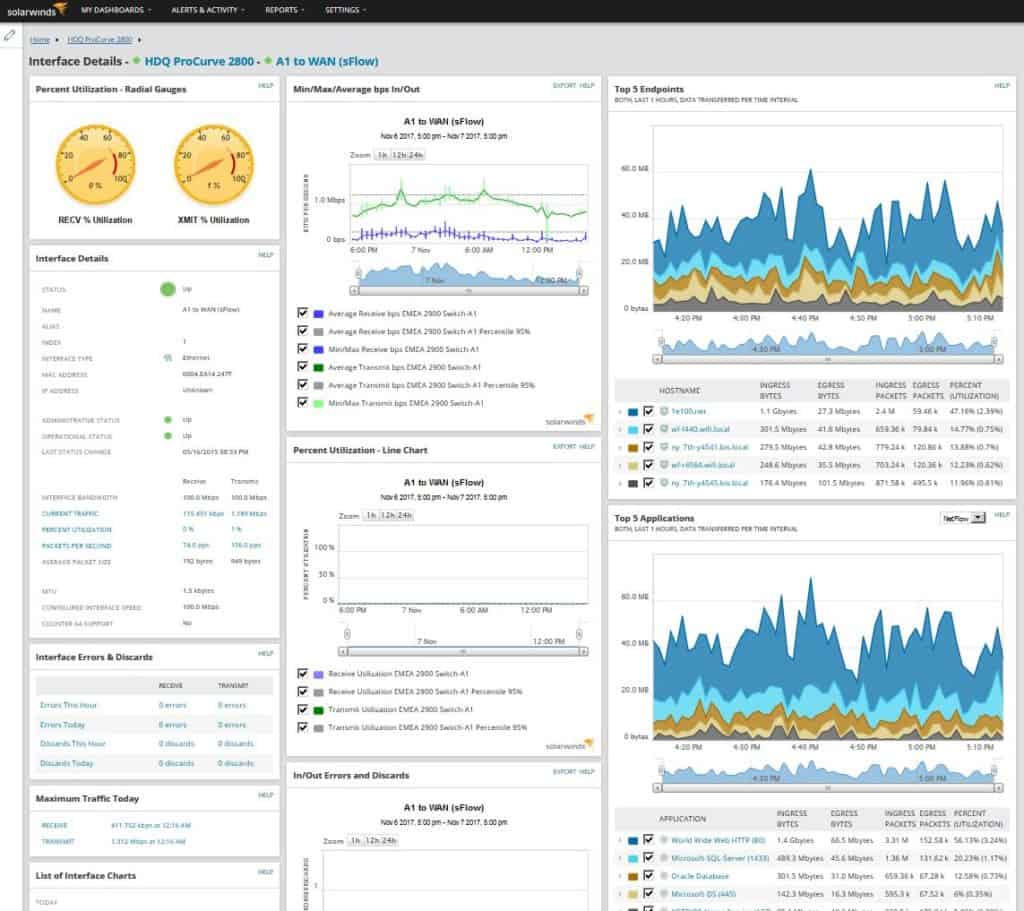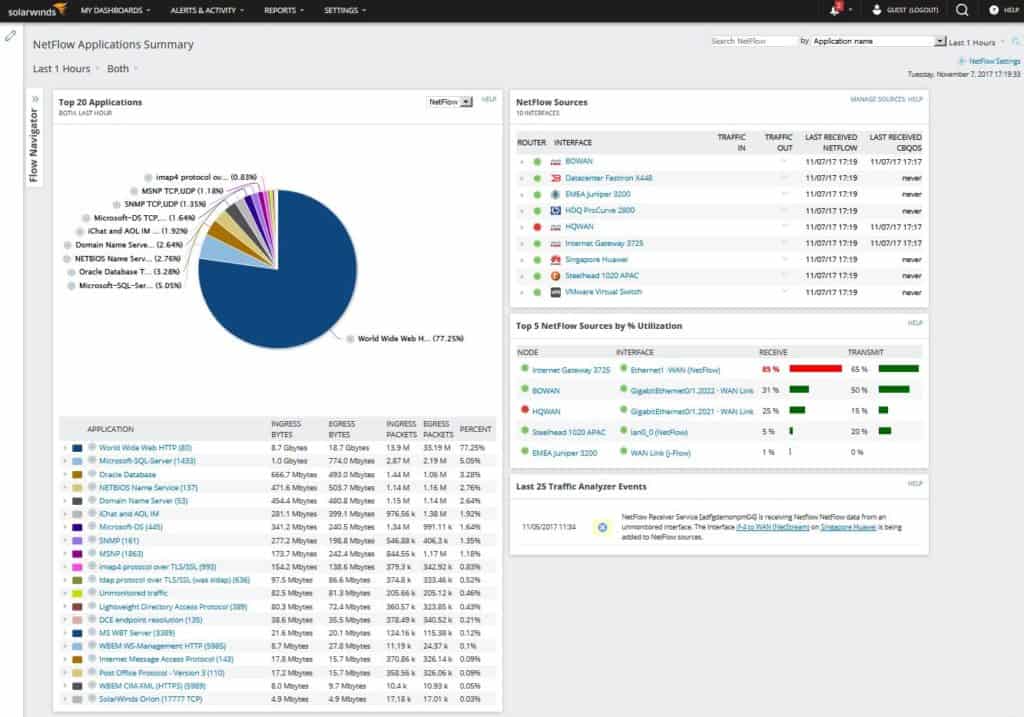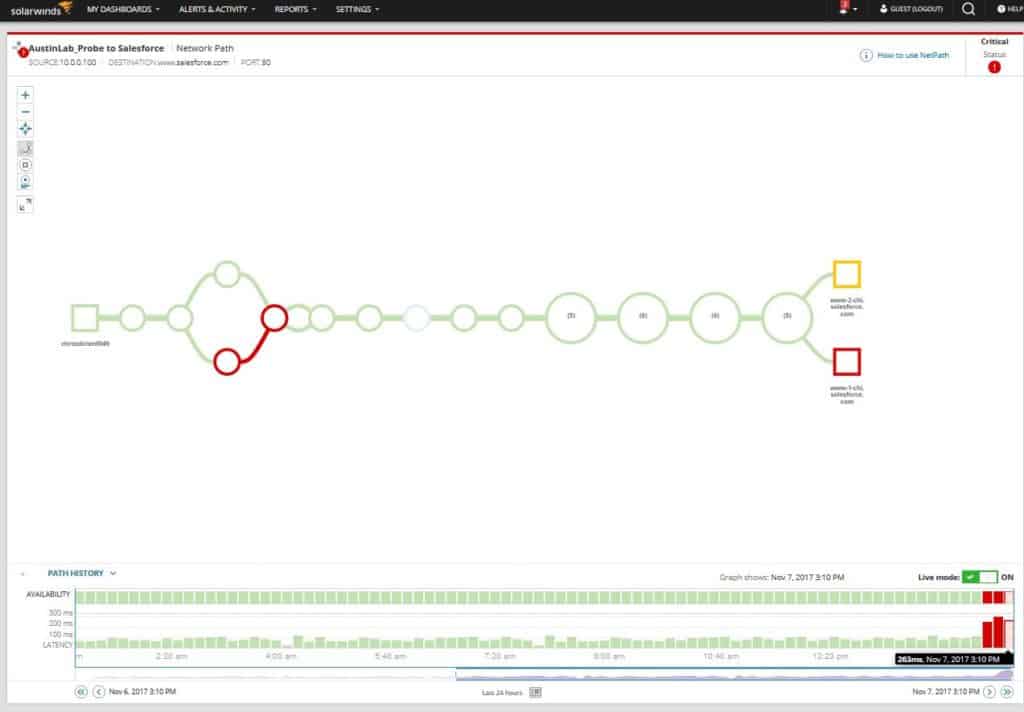Cacti was one of the top open-source monitoring software packages in the market several years back and is still used in various companies throughout the world. Whether you're using Cacti now or are looking for a comparable software package, we'll go over some of the Best Cacti Alternatives on the Market as of today!
We'll be comparing not only the features of cacti with popular alternatives but the user interface that is so easy to use.
Here is our list of the best alternatives to Cacti:
- Paessler PRTG – FREE TRIAL This collection of monitoring systems provides network discovery, mapping, and constant monitoring, plus traffic analysis. Available as a SaaS package or for installation on Windows Server. Get a 30-day free trial.
- ManageEngine OpManager – FREE TRIAL A monitoring system for networks and servers that provides network discovery and mapping. Available for Windows Server, Linux, AWS, and Azure. Get a 30-day free trial.
- Site24x7 Network Monitoring – FREE TRIAL This cloud-based system can monitor multiple sites and offers both device monitoring and traffic analysis for wired and wireless networks. Get a 30-day free trial.
- Progress WhatsUp Gold An on-premises package that provides device performance monitoring through autodiscovery and network mapping based on SNMP. Runs on Windows Server.
- Nagios Core This highly respected system monitoring package watches over networks, servers, and software and can be extended by a free library of plug-ins. Available for Linux, VMs, and Docker
- SolarWinds Network Performance Monitor This on-premises package for Windows Server discovers all network devices and then keeps constant track of performance.
Some features we'll be looking for in an alternative are as follows:
- Comparable Graphing Functionality
- Built-in SNMP Support & Monitoring
- Built-in Templates for Graphs and reports
- User Management for Different User Types and Administration
- Automated Network Auto-discovery of Network Nodes
- Log Viewer
- Netflow Support
- Downtime Alerts and Reports
- Real-time Reports/Graphs w/ 5 second intervals
The features from above are what come natively with Cacti via either their default installation or through a Plug-in that is officially supported by Cacti.
We'll include all software that has the ability to complete at least the tasks listed above and more.
The Best 2025 Alternatives to Cacti
1. Paessler PRTG – FREE TRIAL
Paessler PRTG Network Monitor is another great option for a Cacti Replacement, as they provide all of the features we've listed above and much more. PRTG has a proven track record of on-premise monitoring and has recently released their Cloud monitoring solution as well if this is something that you would like to explore.
Paessler PRTG offers up to 100 Sensors FREE if you would to test it out in your network and supports many of the same features that SolarWinds does, including Flexible Alerts and reporting systems, Mobile Apps for iPhone, Ipad, and Android devices, Network Maps and much more!
PRTG has hundreds of pre-packaged sensors that you can use to quickly set up and monitor, graph, and create reports about quickly within their interface, including Bandwidth Monitors, Web Service Monitors, WMI, Linux, Virtual Server Monitors, and many more.
Pros:
- Built for professionals and enterprise use
- Offers monitoring templates for quick insights into network and device performance
- Can check device health through a series of checks such as ICMP and ping
- Makes great use of visualizations to map out more complex wireless networks
- Pricing is based on utilization, making it a predictable and scalable option for any size network
Cons:
- Offers a wide range of monitoring options, requiring time to fully utilize all features
You can use up to 100 sensors for free indefinitely, or you can register for the fully functional 30-day free trial.
2. ManageEngine OpManager – FREE TRIAL
ManageEngine OpManager is well priced for the feature sets they provide and have extensive support for all of the Cacti features we are looking to replace. OpManager is another Great Cacti Alternative if you are looking for a visually attractive replacement.
Boasting not only the typical Networking, bandwidth and IP monitoring features that many of the other solutions here have as well, but Configuration Management, Switch port management, wireless monitoring, and much more.
Pros:
- Designed to work right away, features over 200 customizable widgets to build unique dashboards and reports
- Leverages autodiscovery to find, inventory, and map new devices
- Uses intelligent alerting to reduce false positives and eliminate alert fatigue across larger networks
- Supports email, SMS, and webhook for numerous alerting channels
- Integrates well in the ManageEngine ecosystem with their other products
Cons:
- Is a feature-rich tool that will require a time investment to properly learn
Get started with a 30-day free trial.
3. Site24x7 Network Monitoring – FREE TRIAL
Site24x7 Network Monitoring is part of a cloud platform of monitoring systems. It is able to monitor multiple networks in one account and it starts by discovering all of your network devices to populate a network inventory. The package will also automatically create a Layer 2 network topology map.
The constant device performance monitor relies on the Simple Network Management Protocol (SNMP) for live statistics. The system also provides traffic analysis through the use of NetFlow, J-Flow, sFlow, CFlow, IPFIX, NetStream, and AppFlow.
Pros:
- Customizable screens
- Monitors wireless networks as well as LANs
- Combines with server and application monitoring
Cons:
- No on-premises version
The system console is cloud-resident, so you can access it from anywhere through any standard browser. Try this package with a 30-day free trial.
4. Progress WhatsUp Gold
Progress WhatsUp Gold has made great strides in the Network Monitoring, Graphing, and Reporting realm with their latest offering of WhatsUp GOLD. New features include Real-time Monitoring, monitor Cloud services including AWS, Azure, and many more, Network Auto-discovery features, and topology mapping.
Their dashboard also provides great visibility into critical services, servers, and computers within your network, allowing you to view Alerts and Uptime availability and the percentage of uptime throughout their lifespan. Hardware performance, faults, utilization, failures, and bottlenecks can be selected within the Alert Center Dashboard as seen below.
Pros:
- Uses simple visualizations to help provide at-a-glance insights
- Supports modular pricing, allowing companies to pay only for features they intend to use
- Can monitor LANs, WANs, and cloud-based applications such as container environments
Cons:
- Formatting for text alerts can use improvement
- Modular upgrades might not be a good fit if you intend on utilizing all aspects of a networking monitor
Download the free trial from their website.
5. Nagios
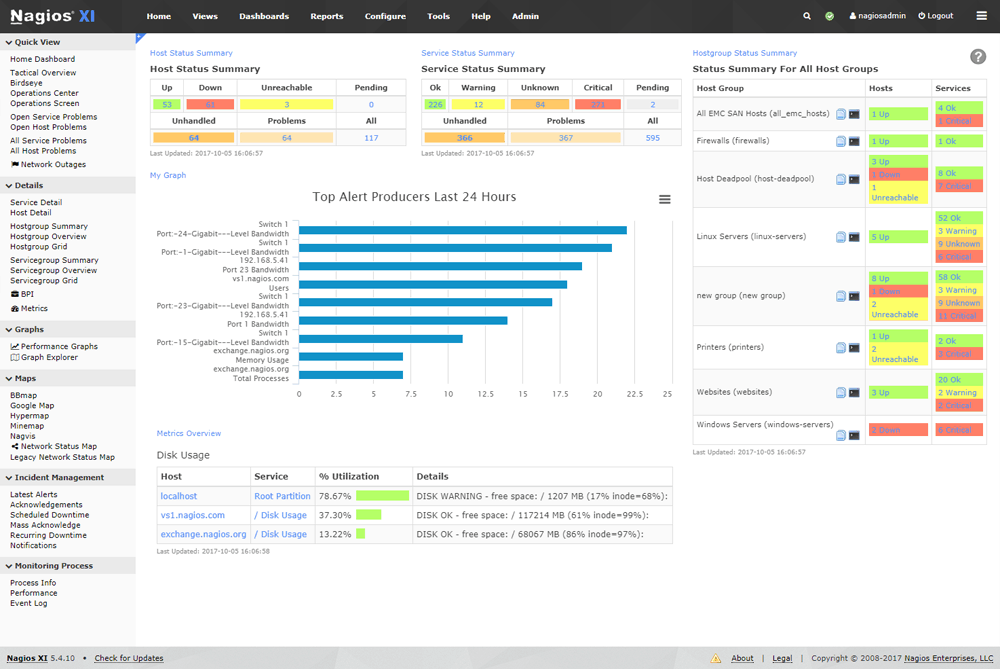
Nagios is an Open-source replacement and is known as one of the longest-standing Network management and monitoring solutions out there. It has many features that Cacti has and add-on's and plugins that give it the flexibility and features that you may be looking for.
Nagios is not as straightforward as some of the other software packages from above, but it works nonetheless.
Nagios has an abundance of plugins that will help you complete many of the same tasks that we're looking for – but we must warn you that you'll have to get your hands dirty with the configuration files and tasks included with installing and maintaining Nagios, as its not nearly as point and click as many thinks.
Pros:
- Open-source transparent tool
- Simple, yet informative interface
- Flexible alerting options support SMS and email
- Robust API backend makes it a great option for developers who want to integrate their own custom applications
Cons:
- The open-source version lacks the quality support found in paid products
Nagios is open-source software and is free to download.
Related Post: Nagios vs Cacti Comparison
6. SolarWinds Network Performance Monitor
SolarWinds offers one of the best network performance monitoring and bandwidth monitoring tools on the Market – SolarWinds Network Performance Monitor.
It has features like Netflow Analyzer, Bandwidth Monitoring, Network Inventory Management, IPAM, and much more.
It not only has support for SNMP but ICMP/Ping, WMI, Netflow, Sflow, Jflow, IPFIX, and much more. It comes with pre-built templates, reports, graphs, and alerts to help you get monitoring within minutes instead of days.
SolarWinds is the Industry standard when it comes to Network monitoring and management and their ever-growing offerings and rock-solid support are always there around the clock if you need assistance with any of their Software packages.
They've released features with NPM that really make it stand out from the crowd, particularly their Network Insights for Cisco ASA and NetPath capabilities.
NetPath is a visual analysis of each hop or network device your traffic is traveling through and it identifies points of congestion and latency to help you troubleshoot quickly and efficiently without having to dig too far for the issue.
Pros:
- Built for medium to enterprise-size networks, with features designed to streamline troubleshooting and improve TTR and overall productivity
- Can automatically discover new devices on the network and provide templated health reports for immediate insights upon installation
- Offers configuration management, allowing teams to quickly backup and restore changes that may have impacted performance
- Can monitor settings for unauthorized changes and specific teams or managers
- Offers a customizable dashboard that has a host of different options for visualizing network performance
Cons:
- Not designed for home networks, this is an enterprise tool built for system administrators and network technicians
Click here to download a fully functional 30-day free trial.
Conclusion
The above Network Monitoring and management solutions are great alternatives for Cacti and plotting out graphs of your network infrastructure! We've gone through each of these software packages and are confident that you will find them to be very similar to Cacti.
We suggest you download a few packages from above and get them configured in a lab/testing environment before actually implementing them into your Production environment. You'll quickly figure out which one suits your needs over the others!
Cacti Alternatives FAQs
What is Cacti?
Cacti is a network monitoring tool that is used to track network performance and activity.
What are some common Cacti alternatives?
Common Cacti alternatives include Zabbix, Nagios, PRTG, LibreNMS, and Grafana.
How do Cacti alternatives differ from Cacti?
Cacti alternatives differ from Cacti in terms of their specific features and capabilities, as well as their user interface and ease of use.

